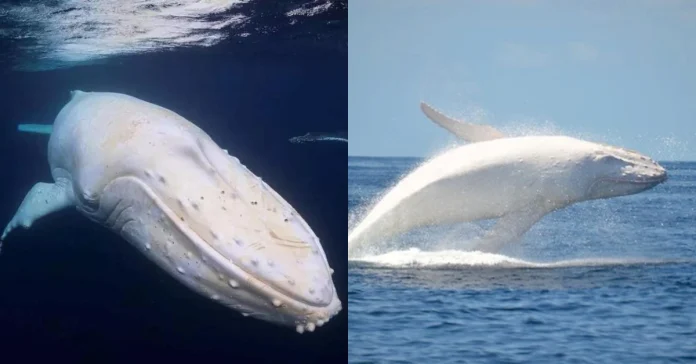Introduction
The vast and frigid waters of the Arctic are home to a myriad of unique and captivating marine life, but few creatures capture our imagination quite like the white whale. Revered by indigenous cultures and immortalized in literature, the white whale is an enigmatic and elusive species inhabiting the cold, ice-laden seas of the Arctic and subarctic regions. In this article, we will reveal the mysteries of the white whale, delving into its biology, behavior, and ongoing research that seeks to protect and preserve this iconic species for future generations.
A Spectral Presence: The White Whale
The term “white whale” can refer to two distinct species found in the Arctic and subarctic waters: the beluga whale (Delphinapterus leucas) and the elusive white morph of the killer whale or orca (Orcinus orca). Both species captivate our attention with their striking appearance and intriguing behavior, but the beluga whale is most commonly associated with the moniker “white whale.” This article will focus primarily on the beluga whale, a remarkable and highly social cetacean that thrives in the Arctic’s challenging environment.
The Ghost of the Arctic: The Beluga Whale
The beluga whale, a small, toothed whale, is known for its distinctive white coloration and bulbous forehead, called the “melon.” Adult belugas can reach lengths of 13-20 feet (4-6 meters) and weigh between 2,000 and 3,500 pounds (900 and 1,600 kilograms). The beluga’s striking white color serves as an effective camouflage in the ice-laden seas of the Arctic. At the same time, its robust melon, which contains a specialized echolocation system, enables it to navigate and communicate in the dimly lit and often murky waters.
A Life in the Ice: Adaptations for Arctic Survival
Beluga whales are uniquely adapted to life in the Arctic, with several key features that enable them to thrive in such a challenging environment. One critical adaptation is their blubber, a thick layer of fat that protects white whales from the frigid waters and provides a valuable energy reserve. Additionally, belugas can navigate the ever-shifting ice floes thanks to their flexible necks and lack of a dorsal fin, allowing them to swim above easily and below the ice.
Their specialized echolocation system helps them navigate the Arctic’s murky waters and locate and capture prey, such as fish, squid, and crustaceans, beneath the ice. Furthermore, belugas can hold their breath for up to 25 minutes, allowing them to dive to depths of up to 2,300 feet (700 meters) in search of food.
The Social Lives of Beluga Whales
Beluga whales are highly social animals, forming tight-knit communities known as pods, ranging in size from a few individuals to several hundred. These pods serve as a support system, providing protection, cooperative hunting, and social bonding among their members. The beluga’s complex vocal repertoire, which includes a wide range of clicks, whistles, and songs, facilitates communication within the pod and has earned them the nickname “canaries of the sea.”
Mating, Calving, and Parental Care
Beluga whales exhibit a seasonal breeding pattern, with mating typically occurring during the spring months. Following a gestation period of approximately 14-15 months, females give birth to a single calf, initially dark gray but gradually lightening as it matures. Calves of white whales remain dependent on their mothers for nursing and protection for the first two years of their life, during which time they learn essential survival skills and social behaviors from their pod.
Migration and Seasonal Movements
As the Arctic undergoes dramatic seasonal changes, beluga whales embark on remarkable migrations to adapt to their environment. In the summer months, they are known to congregate in shallow, ice-free coastal waters, where they feed, give birth, and molt their skin. As winter approaches and sea ice begins to form, belugas move to deeper waters. They spend the colder months beneath the ice, relying on their echolocation and breath-holding abilities to navigate and hunt for food.
Conservation and the Future of the White Whale
As the Arctic faces unprecedented challenges brought on by climate change, pollution, and increasing human activities, the white whale’s future hangs in the balance. Addressing these threats requires a comprehensive understanding of beluga whale biology, behavior, habitat requirements, and active conservation efforts to protect and preserve this iconic species.
Monitoring and Research: Key Tools for Conservation
Ongoing research and monitoring programs are essential to understanding beluga whale populations, their habitat usage, and the threats they face. Through satellite tagging, acoustic monitoring, and aerial surveys, researchers gain valuable insights into the white whale’s life history, migration patterns, and population trends, which can inform effective conservation strategies and policies.
Engaging Communities and Fostering Stewardship
Indigenous communities have long held deep connections with beluga whales, relying on them for sustenance, cultural practices, and spiritual fulfillment. Collaborating with these communities in research, monitoring, and management efforts is crucial to the long-term survival of the white whale. Furthermore, engaging the broader public through education and outreach can foster a sense of stewardship and commitment to the conservation of belugas and their Arctic home.
Conclusion
In this article, we have journeyed through the icy waters of the Arctic to discover the remarkable white whale, delving into the biology, behavior, and adaptations that enable this enigmatic species to thrive in such a harsh environment. As we face the challenges of climate change and human-induced impacts on the Arctic ecosystem, engaging in research, conservation, and stewardship is more important than ever to ensure the white whale’s continued survival. By learning about and appreciating this iconic species, we can help in preserving the rich biodiversity and fragile beauty of the Arctic for generations to come.

